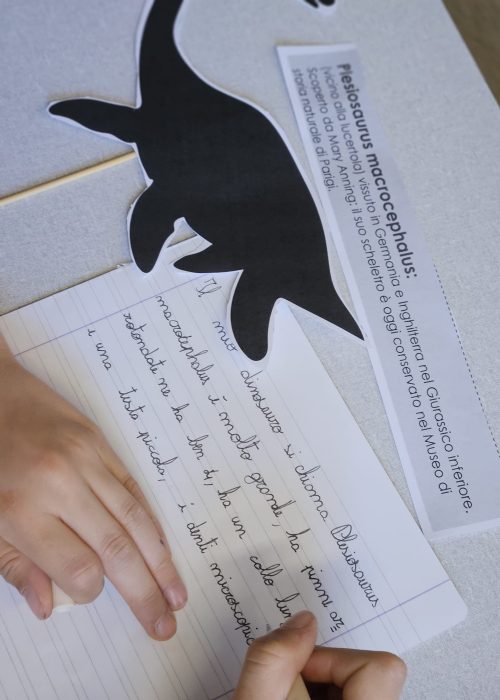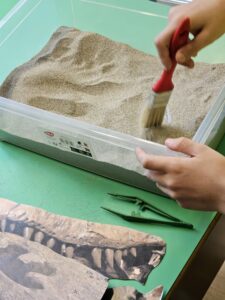Among the 36 exciting STEAM boxes we’ve developed, one stands out for its ability to captivate young imaginations: the Dinosaurs box. It taps into the excitement that dinosaurs naturally bring to young learners, making science fun and accessible. This box combines STEAM principles—science, technology, engineering, art, and math—into activities that let students become junior palaeontologists. With a focus on practical learning, students uncover fossils, explore scientific methods, and creatively express what they learn, making it a valuable tool for any classroom.

Engaging Students with Storytelling
At the heart of this box is the inspiring story of Mary Anning, a pioneering British palaeontologist whose discoveries transformed our understanding of prehistoric life. Her story, on which the Dinosaurs box is based, not only introduces students to palaeontology but also provides a powerful example of women in science, of resilience, and of encouraging young learners to pursue their interests in science.
By starting with this storytelling element, teachers can capture their students’ imagination and set the stage for the practical activities that follow. The story creates an emotional connection to the subject matter, helping students relate to the work of a palaeontologist and igniting their enthusiasm for the hands-on learning that lies ahead.

The Practical Sequences
The Dinosaurs box features two detailed sequences designed to cater to different age groups and levels of understanding. These activities are rooted in the principles of experiential learning.
- Sequence 1 (Ages 6-9): This sequence introduces younger students to palaeontology through sandbox excavation activities. Students work in pairs to uncover laminated dinosaur silhouettes buried in sand, piecing them together like a puzzle. This activity fosters teamwork, problem-solving and introduces the scientific method in a playful, accessible manner.
- Sequence 2 (Ages 9-12): For older students, this sequence offers a more advanced approach, simulating a “real” excavation field. Students work in groups to map out excavation areas, document their findings, and hypothesise about the species they have uncovered based on clues like teeth and footprints. This deeper dive into palaeontology helps develop critical thinking, research skills, and scientific inquiry, giving students a more comprehensive understanding of how palaeontologists work.
Linking Storytelling and Hands-on Learning
The strength of the Dinosaurs box lies in the seamless connection between the storytelling and hands-on elements. After learning about Mary Anning and her groundbreaking work, students are given the chance to engage in similar activities themselves. They move from hearing about fossil discoveries to uncovering them with their own hands, effectively bridging the gap between passive learning and active exploration. This combination of storytelling and practical activity helps students retain information more effectively and creates a richer educational experience.

Classroom Implementation
Implementing the Dinosaurs box in the classroom is both straightforward and rewarding. Teachers are provided with all the necessary instructions. The activities are designed to be flexible, allowing for adaptation to different class sizes and learning environments.
To extend the learning experience, teachers can encourage students to create a mini-museum showcasing their findings. This can include dinosaur silhouettes, posters detailing each species’ characteristics, and even salt dough imprints of fossils. Such creative extensions not only reinforce the educational content but also offer opportunities for cross-curricular learning, integrating art and communication skills into the science curriculum.
Success in Schools
The Dinosaurs box has already been tested in schools, with highly positive feedback from both teachers and students. The hands-on nature of the activities keeps students engaged and motivated, while the storytelling component adds depth to the learning process.

The Dinosaurs box is a fun and engaging way to teach students about science.
Ready to bring more excitement to your classroom? Discover the other STEAM boxes in the project and unlock even more creative and engaging ways to inspire your students with hands-on learning and storytelling!
